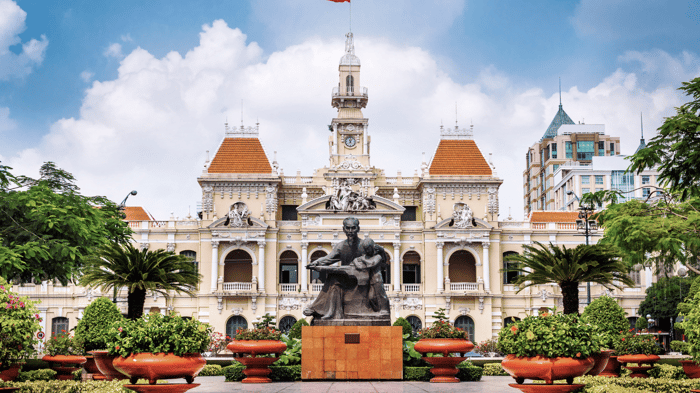The Heart of Cambodia & Vietnam (Southbound)

This magical Southeast Asia river cruise along the Mekong River will take you through Cambodia and Vietnam, showing you the culture and local traditions of each country and the must-see sites along the way.
Your adventure begins in Siem Reap, Cambodia, with the magnificent Temples of Angkor. Constructed between the 9th and 13th centuries, these ancient ruins are a display of architectural complexity and grandeur unlike anything else in the world. Stand in awe at the most famous of these temples, Angkor Wat, dedicated to the Hindu god, Vishnu; and the Bayon temple, which features some 200 mysterious faces carved in its many towers. Enjoy an inspiring Apsara dance performance and other treasures of the city before embarking on your river cruise. In Kampong Tralach, an ox-cart ride will show you the Cambodian countryside and you’ll meet a local farmer and learn about his daily life. The temple of Wat Hanchey, perched on a hilltop, will provide the most stunning views, and then take part in a traditional water blessing with local monks.
Continue your journey into Vietnam and stroll through a local market—a unique opportunity to see locals buying and selling fresh produce. Via sampan, visit the home of a local family for a cotton-weaving demonstration and a local workshop which makes rice wine and traditional candies. In bustling Ho Chi Minh City, try your hand in the kitchen with a Vietnamese cooking class and go on an excursion to the Cu Chi Tunnels—the extraordinary network of tunnels used by the Viet Cong during the war.
Fly to Hanoi and explore the famous sites, such as the Old Quarter, where peddlers have traded goods for centuries on its 36 ancient streets. Next, a remarkable 2-night cruise along Ha Long Bay will show you its beautiful Limestone Islands. You’ll visit the Cua Van Floating Village, spectacular caves, and even go for a swim at Ti Top Island. The perfect ending to an unforgettable Southeast Asia river cruise vacation!
Avalon's suite ships in Europe and Southeast Asia boast wall-to-wall windows that transform cabins into open-air balconies, and there are also river-facing beds to make the most of passing views.
The line’s Active & Discovery sailings have optional action-packed experiences alongside traditional shore tours.
Avalon Waterways also offers short-break cruises of three and four nights.











Since first taking her maiden voyage on the Mekong River, the Avalon Saigon has been praised for delivering an intimate cruise experience as part of Avalon's award-winning fleet of Suite Ships®.
